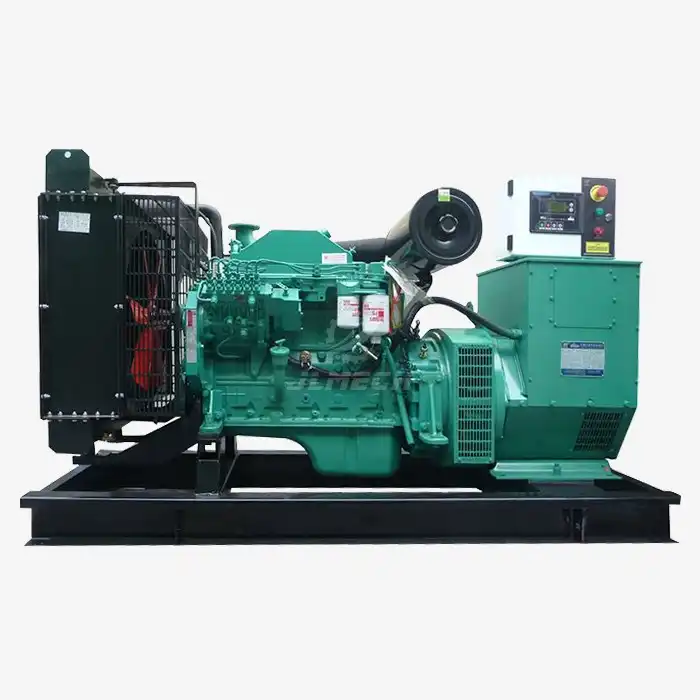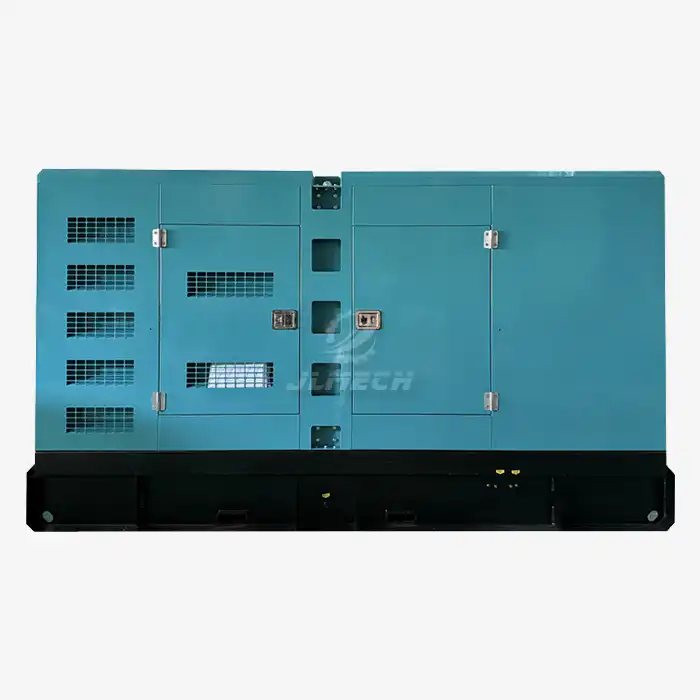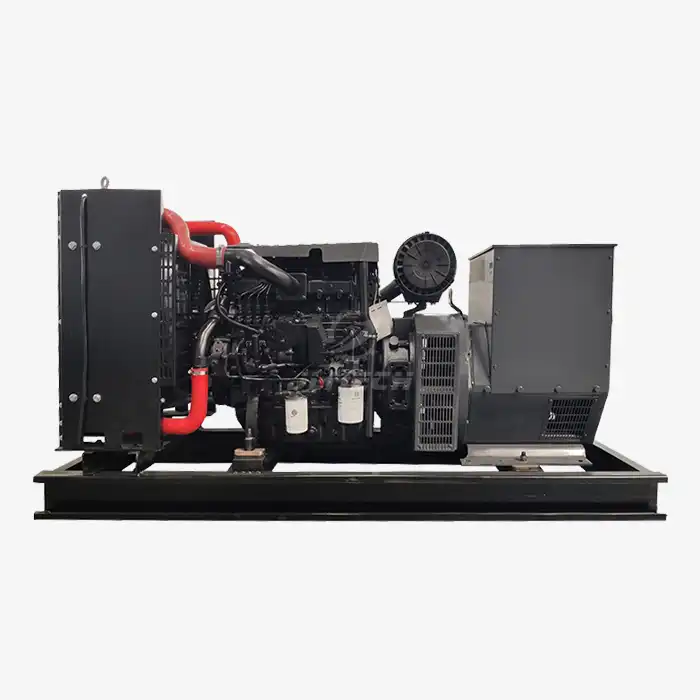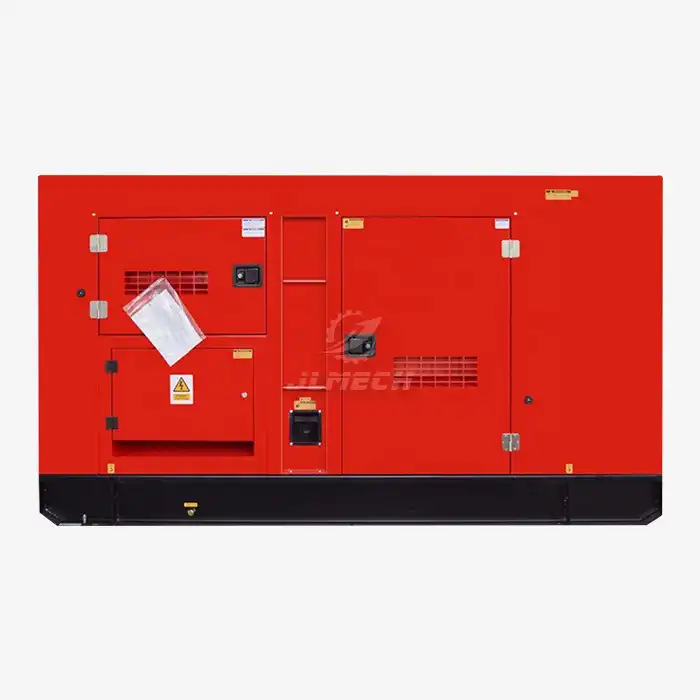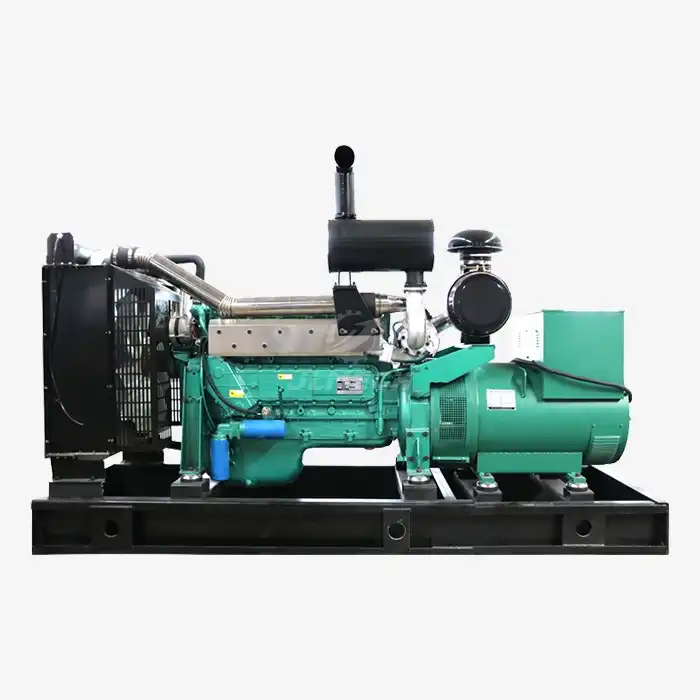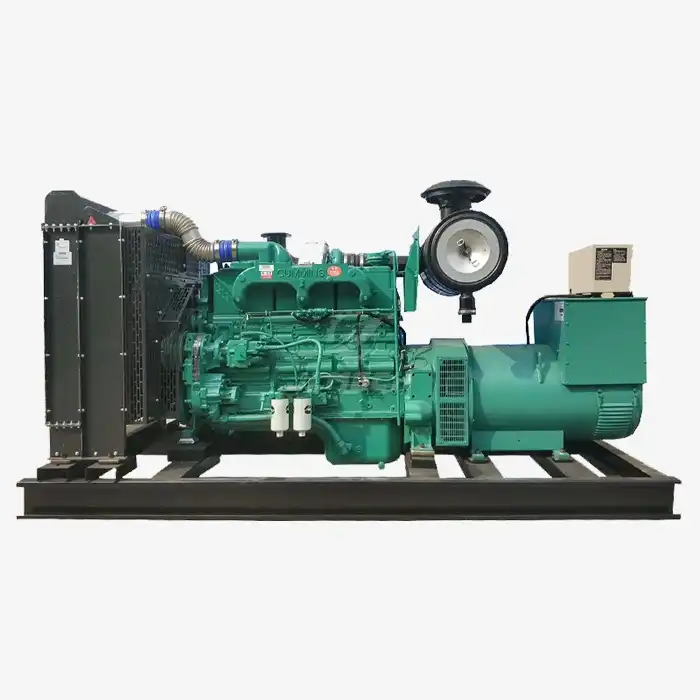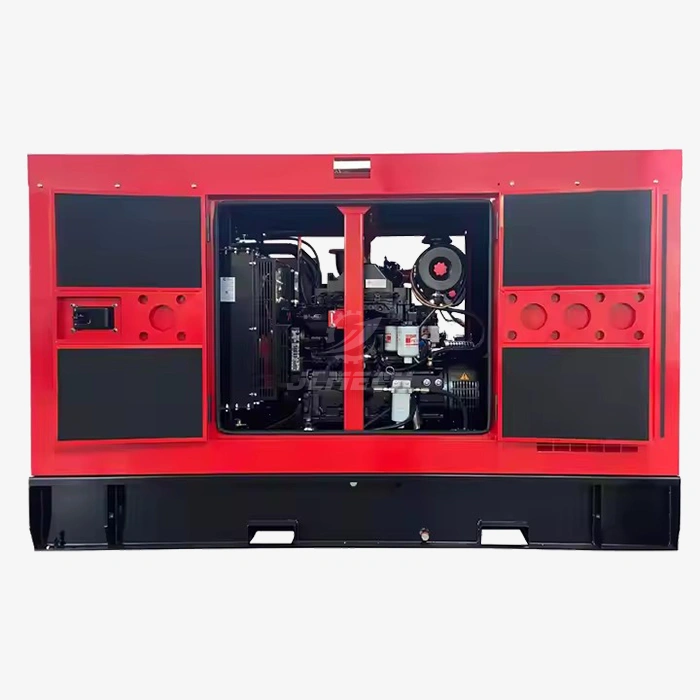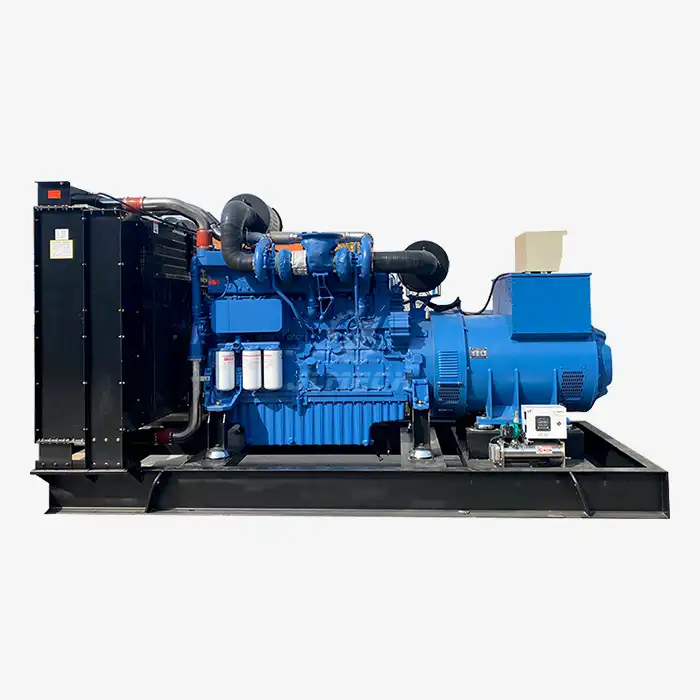This surge power requirement is particularly important for industrial applications where large machinery is involved. A properly sized generator ensures smooth operation without the risk of overloading or damaging the equipment. It's worth noting that the exact wattage needed depends on various factors, including the motor's size, type, and starting method. Understanding these requirements is essential for selecting the right generator capacity for your specific needs.
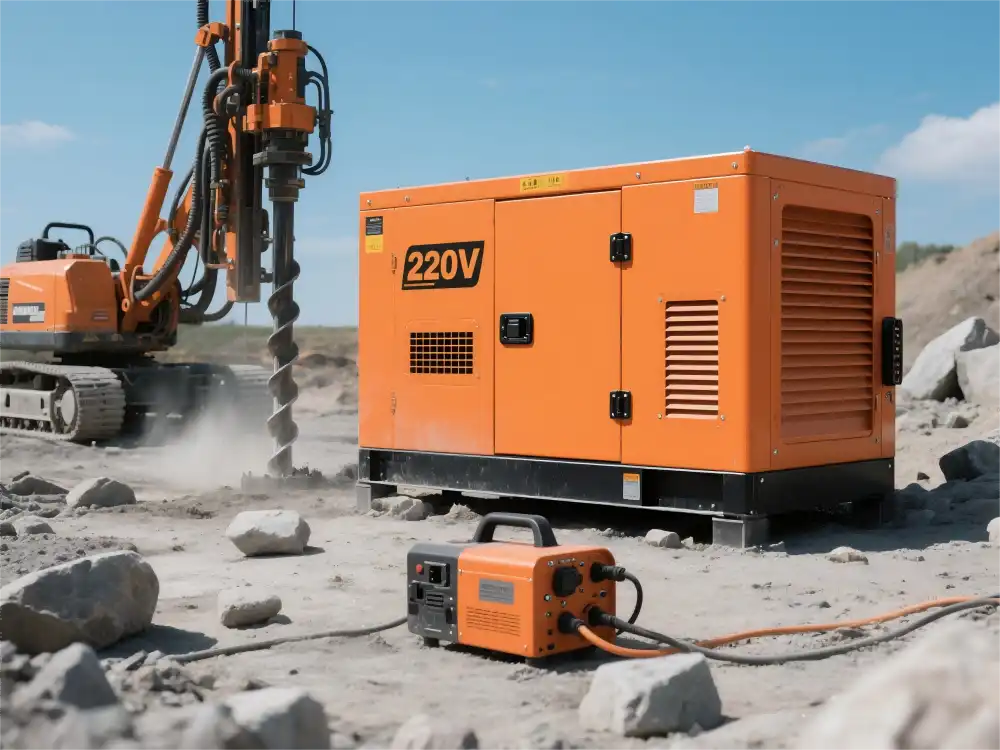
How much surge power does a 220v diesel generator need for motors?
The surge power required for a 220v diesel generator to start motors varies depending on the motor's characteristics. Generally, motors need about 3-7 times their running wattage to start. For example, a 5 horsepower motor that requires 3,700 watts to run might need up to 11,000 watts to start. This substantial increase in power demand is why generators are often rated with both continuous and peak power outputs.
Factors Affecting Surge Power Requirements
Several factors influence the amount of surge power needed:
- Motor Size: Larger motors typically require more starting power.
- Motor Type: Induction motors usually need more starting power than synchronous motors.
- Starting Method: Direct-on-line starting requires more power than soft start or variable frequency drive methods.
- Load: A loaded motor needs more starting power than an unloaded one.
- Voltage Drop: Excessive voltage drop during starting can increase the required surge power.
Understanding these factors helps in accurately sizing a generator for specific motor applications. It's always better to have some extra capacity to handle unexpected loads or future expansions.
Soft starters vs. direct starting: Which is better for diesel generators?
When it comes to starting heavy motors on a 220v diesel generator, the choice between soft starters and direct starting can significantly impact the generator's performance and lifespan. Both methods have their advantages and are suited for different applications.
Direct Starting
Direct starting, also known as across-the-line starting, involves applying full voltage to the motor at once. This method:
- Provides maximum starting torque
- Is simple and cost-effective
- Works well for smaller motors or where high initial torque is needed
However, direct starting can cause high inrush currents, potentially leading to voltage dips that affect other equipment connected to the same generator.
Soft Starting
Soft starters gradually increase voltage to the motor, reducing the initial current draw. Benefits include:
- Reduced mechanical stress on the motor and driven equipment
- Lower peak current demand, easing the load on the generator
- Minimized voltage dips, benefiting other connected equipment
While soft starters are more expensive initially, they can extend the life of both the motor and the generator, potentially offering long-term cost savings.
For most applications using a 220v diesel generator, soft starting is often the better choice, especially for larger motors or in situations where minimizing voltage fluctuations is crucial. However, the final decision should be based on specific application requirements and cost considerations.
Calculating starting kW for heavy equipment on 220v diesel generators
Accurately calculating the starting kW required for heavy equipment is crucial when selecting a 220v diesel generator. This ensures the generator can handle the initial surge without overloading or causing voltage drops that could affect other connected equipment.
Step-by-Step Calculation Process
- Determine the running power (kW) of the motor from its nameplate or specifications.
- Identify the starting current multiplier, which typically ranges from 3 to 7 times the running current.
- Calculate the starting kVA using the formula: Starting kVA = Running kW × Starting Current Multiplier ÷ Power Factor
- Convert kVA to kW: Starting kW = Starting kVA × Power Factor
For example, let's consider a 50 kW motor with a starting current multiplier of 5 and a power factor of 0.8:
- Starting kVA = 50 kW × 5 ÷ 0.8 = 312.5 kVA
- Starting kW = 312.5 kVA × 0.8 = 250 kW
In this case, you would need a generator capable of providing at least 250 kW of starting power to safely start this motor.
Additional Considerations
When calculating starting kW, also consider:
- Simultaneous starts: If multiple motors might start at the same time, sum their starting kW requirements.
- Ambient conditions: High temperatures or altitudes may reduce generator capacity.
- Future expansion: Allow some extra capacity for potential additional loads.
Jlmech's range of 220v diesel generators are designed to handle these complex starting requirements. Our generators feature robust engines and alternators capable of managing significant load variations, ensuring reliable power supply even in demanding industrial environments.
Jlmech's 220v diesel generators are engineered for excellence, offering a power output range of 20kW to 500kW, customizable for bulk orders. These generators are designed to meet the diverse needs of various industries, from construction sites to data centers. With a rated AC voltage of 380V/400V and a frequency of 50Hz, our generators ensure stable power supply for critical operations.
Available in both silent and open frame configurations, Jlmech generators prioritize user needs. The water cooling system ensures optimal performance, while electric starting provides reliable ignition. Our generators are fully customizable, with OEM/ODM options available to meet specific requirements.
Safety and compliance are paramount, with our generators holding CE, Euro 5, EPA, and CARB certifications. The fuel tank capacity ranges from 100L to 1,500L, offering extended runtime options for uninterrupted power supply. With a noise level of ≤65 dB(A) at 7 meters, these generators are suitable for noise-sensitive environments.
Voltage stability is maintained at ±1%, crucial for protecting sensitive equipment. The compact design of our generators makes them ideal for space-constrained sites, offering flexibility in placement and installation.
Key features of Jlmech's 220v diesel generators include high efficiency for reduced operational costs, advanced soundproofing for urban compliance, and portability options for easy relocation. These generators are built to withstand demanding environments, providing reliable backup or primary power for a wide range of applications.
With Jlmech's commitment to quality and innovation, customers can rely on our 220v diesel generators for consistent, efficient, and powerful performance in any setting.
Conclusion
Understanding the power requirements for starting heavy motors is crucial when selecting a diesel generator. While 220v diesel generators do require higher wattage for starting heavy motors, proper sizing and the use of starting aids like soft starters can help manage these demands effectively. By carefully calculating your power needs and considering factors like surge requirements and starting methods, you can ensure your generator system provides reliable power for all your equipment.
For businesses in the industrial, construction, healthcare, or commercial sectors looking for robust and efficient power solutions, Jlmech offers a range of high-quality diesel generators designed to meet your specific needs. With over 29 years of experience in power solutions, Jlmech has the expertise to provide you with generators that can handle the most demanding applications, including those requiring high starting wattage for heavy motors.
Don't let power uncertainties hinder your operations. Contact Jlmech today at skala@whjlmech.com to discuss your power requirements and find the perfect diesel generator solution for your business. Our team of experts is ready to help you ensure uninterrupted power supply, no matter how challenging your starting load requirements may be.
References
1. Johnson, R. (2022). "Diesel Generator Sizing for Industrial Applications: A Comprehensive Guide". Power Engineering Journal, 45(3), 78-92.
2. Smith, A. & Brown, B. (2021). "Comparative Analysis of Soft Starting vs. Direct Starting Methods in Heavy Motor Applications". IEEE Transactions on Industrial Electronics, 68(9), 8234-8245.
3. Thompson, C. (2023). "Optimizing Diesel Generator Performance for High-Inertia Loads". Energy Conversion and Management, 256, 115464.
4. Lee, K. et al. (2020). "Impact of Motor Starting on Diesel Generator Stability: A Case Study". International Journal of Electrical Power & Energy Systems, 118, 105825.
5. Garcia, M. (2022). "Advancements in 220V Diesel Generator Technology for Industrial Power Solutions". Renewable and Sustainable Energy Reviews, 162, 112427.
6. White, D. & Green, E. (2021). "Efficiency Improvements in Modern Diesel Generators for Heavy Motor Starting". Applied Energy, 282, 116180.



